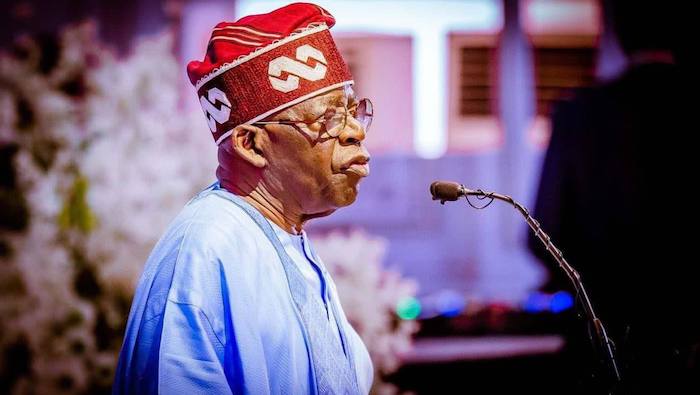British economist John Maynard Keynes was one of the most outstanding personalities of the twentieth century. His contributions to economic theory and application provided the paradigm shift in global and regional economic and political decision-making, which helped the restructuring of the world economy especially after the Second World War.
For starters, he is credited as being the founder of Macroeconomics, a branch of economics that deals with money, interest rates, business cycles and government intervention to establish equilibrium in the interplay of economic forces.
Essentially, Keynes was of the view that market forces alone were not enough to determine economic outcomes. There needed to be the role of government in helping to create aggregate demand among the various economic players to steer economic development and growth. In economic theory this is referred to as demand-side economics which Keynes was credited with introducing to economic decision making and management. It is this concept of economics that had been largely guiding economic policies and decision-making in most countries since the end of the Second World War.
Keynesian thought differed radically from classical economists like Adam Smith, Ricardo Marshall, Milton Friedman and others who had anchored their economic theories on the principle of market forces to drive economic growth.
- Residents stranded as bridge collapses in FCT community
- Presidential aide mourns murdered FCT school principal, Tsoho
Keynes’ ideas came auspiciously at a time when the world was facing massive economic, social and political challenges at the turn of the 20th century following the end of World War I. Upon the defeat of Germany and its allies in the war and the collapse of the Austro-Hungarian and Ottoman empires, there was great uncertainty about how to reorder the world to tackle the immediate and long-term economic and political issues of the post-war situation.
Keynes’ contribution in this regard was contained in a book titled ‘The Economic Consequences of the Peace’. This was a powerful critique of the Treaty of Versailles where the victorious powers, mainly Britain and France, sought to severely punish Germany with a package of harsh economic policies which included reparation payments, occupation and stripping of its industries, among others.
In effect, Britain and France favoured the deployment of a combination of Adam Smith and Ricardo Marshall’s economic theories of “Market Forces and Comparative Advantage” for the reconstruction of post-First World War Germany and Europe. As victors in the war, they harboured the intention of German and European reconstruction on the basis of punitive economic sanctions that would destroy Germany economically and politically. And the economic principle of “market forces and comparative advantages” was the tool they applied to achieve this.
Keynes’ concerns as laid out in the book was that as the First World War had shown that economic and political trends had transcended national borders and gone global, the peace settlement should necessarily proceed in like manner. He was particularly worried that following the terms of Versailles settlement would create economic distortions and create disequilibrium in the German economy, which will in turn affect the entire European economy negatively leading to another war in Europe with more devastating consequences than the previous one.
In Keynes’ words, “If we aim at the impoverishment of Central Europe, vengeance I dare say, will not limp. Nothing can then delay for very long the forces of reaction and the despairing convulsions before which the horrors of the later German war will fade into nothing and which will destroy whoever is victor, the civilisation and the progress of our generation”.
He correctly predicted that the Treaty of Versailles, which he called the “Carthaginian Peace”, would happen in 20 years from the publication of his book in 1919, which is what eventually happened by 1939 when the Second World War broke out.
But the Americans were the first to break out of the “market forces” model which had brought America to near total economic ruin leading to the great depression in 1929. The Republican American President Herbert Hoover persisted with implementing “market forces” mantra with the false assurance that the difficulties would soon be over. But in 1932, tiring of this deception despite the evident collapse of businesses nationwide, and the financial system amid a dangerous tending towards anarchy and revolution, the American people elected Franklin Delano Roosevelt of the Democratic Party with an unprecedented landslide. He had promised in his campaign to implement a “New Deal” of comprehensive economic and social recovery packages for the American people using the Keynesian economic model.
Under the “New Deal”, which featured direct government intervention through massive employment and infrastructure works among several economic initiatives, the American economy was saved from total collapse enabling it to recover sufficiently enough by 1939 when the Second World War broke out.
The success of the implementation of the Keynesian economic model in America influenced the content and direction of the post-Second World War reconstruction of Europe. The European Recovery Plan (also called the Marshall Plan) led to European states adopting the “social market” economic model where all economic players and forces like workers, employers, industrialists, professionals and financial institutions, were locked into an integrated economic system with each playing their part in the development, growth and recovery of individual European states and Europe as a whole.
I provided this long preamble in order to demonstrate that the “market forces” model which the Tinubu administration continues to pursue and justify in Nigeria had long been repudiated by Keynes, about 103 years ago in 1919. It was replaced as an economic model in the US in 1933 under the “New Deal” of President Franklin Delano Roosevelt.
In 1935 following the publication of ‘The General Theory of Employment, Interest and Money’, his most seminal book on economics, Keynes reinforced his economic model with new details on economic management of countries. Following the end of the Second World War, the last nail on the coffin of “market forces” driven economic reforms was drilled.
Since 1933 to date, the Keynesian demand-side model has become intrinsically entrenched into the functioning of the American economy. Attempts by mainly Republican administrations in America to surreptitiously re-introduce “market forces” economics variously through “tax breaks”, “supply side” and “trickle down” measures by abrogating some of the underlying principles of Keynesian economic model have ultimately proven unsuccessful and potentially dangerous to the social and economic fabric of American economy.
As late as 2008 when the banking system collapsed, the American government pumped in trillions of dollars to kick-start the financial system in order to maintain equilibrium in the American economic system.
It is even more pronounced in Europe. In the aftermath of the Second World War, whole swathes of Europe became a laboratory of Keynesian economic application for reconstruction of national and continental economic reconstruction. Britain provided the perfect example of this.
The general elections of 1946 which brought the Labour party to power for the first time in Britain, paved the way for the implementation of the British equivalent of the American “New Deal” with the establishment of the National Health Service (NHS), Council Housing, Education and massive public works and infrastructure, which successive governments in Britain, no matter their political hue have come to recognise as integral part of the British society and economy.
(To be continued)

 Join Daily Trust WhatsApp Community For Quick Access To News and Happenings Around You.
Join Daily Trust WhatsApp Community For Quick Access To News and Happenings Around You.


